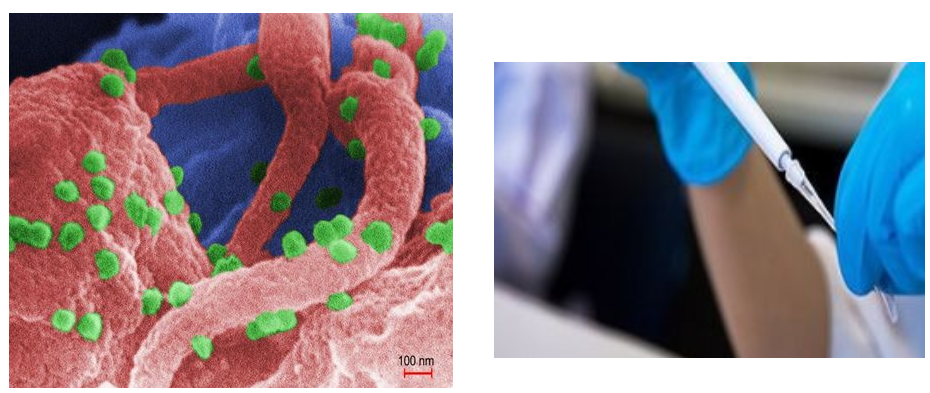 There has been rapid progression seen in the technology used to 3D print live human cells. Over the last four to five years alone we have seen the technology go from only a concept to having several valuable applications. In fact Organovo is already selling 3D printed human liver tissue to the pharmaceutical industry for drug toxicity testing, with their ultimate goal being the 3D printing of entire human organs for transplant.
There has been rapid progression seen in the technology used to 3D print live human cells. Over the last four to five years alone we have seen the technology go from only a concept to having several valuable applications. In fact Organovo is already selling 3D printed human liver tissue to the pharmaceutical industry for drug toxicity testing, with their ultimate goal being the 3D printing of entire human organs for transplant.
The advent of 3D printed organs would equate to tens of thousands of lives being saved, without relying on organ donors. Although we are still likely a decade or even more away from such procedures, organ transplantation is being attacked on another front as well, which is utilizing 3D printing.
Every year, thousands of individuals pass away or suffer major complications after undergoing a transplant. Whether it’s an organ or another part of the human body that’s being transplanted, the human immune system can oftentimes be a patient’s worst enemy. While a strong immune system protects us from disease, viruses, and bacteria, it also will attack any foreign body within the body, namely transplanted cells. Because of this, those who have received a transplant require immunosuppression therapy, which oftentimes can be extremely rough on the body.
Researchers at Pohang University of Science and Technology (POSTECH) in South Korea believe they may have found a 3D printable solution that could increase the efficiency of immunosuppressive drugs such as cyclosporine A (CsA), while also ensuring that the drugs are delivered locally only, resulting in much fewer side effects.
“Our objective was to show the feasibility of using a subcutaneous 3D printed drug delivery system to achieve local and sustained CsA release and to investigate the local immunosuppressive effects of the CsA after cell transplantation,” said Dong-Woo Cho from POSTECH. “The improved load-bearing capacity of the combined microsphere and hydrogel system, and its ability to maintain its integrity and shape during the implantation period, helped to deliver a sustained CsA release, preventing the acceleration of the secretion of cytokines related to immune rejection.”
Currently the system has performed quite well in tests using animal models, outperforming previous tests for delivering drugs via microspheres (tiny biodegradable drug capsules) or hydrogels. During these tests, the microspheres usually ended up migrating from the local site requiring the medication to surrounding organs, causing potentially harmful damage.
“This research could be a fundamental study for overcoming existing cell transplantation limitations, mainly caused by systemic immuno-suppression,” wrote the researchers. “The benefit of the new 3D printed carrier system is that it provides local rather than systemic drug delivery. The carrier we developed could be a promising solution to treating several diseases that require cell-based therapy, such as muscular dystrophy, degenerative disc disease or myocardial infarction.”
It will be interesting to see how far and how quickly this research progresses, as there is a substantial window of use for such a system, at least prior to 3D printed, stem cell-spawned organs becoming readily available.
Let’s hear your thoughts on this research in the 3D Printed Drug Delivering System forum thread on 3DPB.com.
Subscribe to Our Email Newsletter
Stay up-to-date on all the latest news from the 3D printing industry and receive information and offers from third party vendors.
You May Also Like
Gorilla Sports GE’s First 3D Printed Titanium Cast
How do you help a gorilla with a broken arm? Sounds like the start of a bad joke a zookeeper might tell, but it’s an actual dilemma recently faced by...
Nylon 3D Printed Parts Made More Functional with Coatings & Colors
Parts 3D printed from polyamide (PA, Nylon) 12 using powder bed fusion (PBF) are a mainstay in the additive manufacturing (AM) industry. While post-finishing processes have improved the porosity of...
$25M to Back Sintavia’s Largest Expansion of Metal 3D Printing Capacity Since 2019
Sintavia, the digital manufacturing company specializing in mission-critical parts for strategic sectors, announced a $25 million investment to increase its production capacity, the largest expansion to its operations since 2019....
Velo3D Initiates Public Offering in a Bid to Strengthen Financial Foundations and Drive Future Growth
Velo3D (NYSE: VLD) has been among a number of publicly traded 3D printing firms that have attempted to weather the current macroeconomic climate. After posting a challenging financial report for 2023,...

































